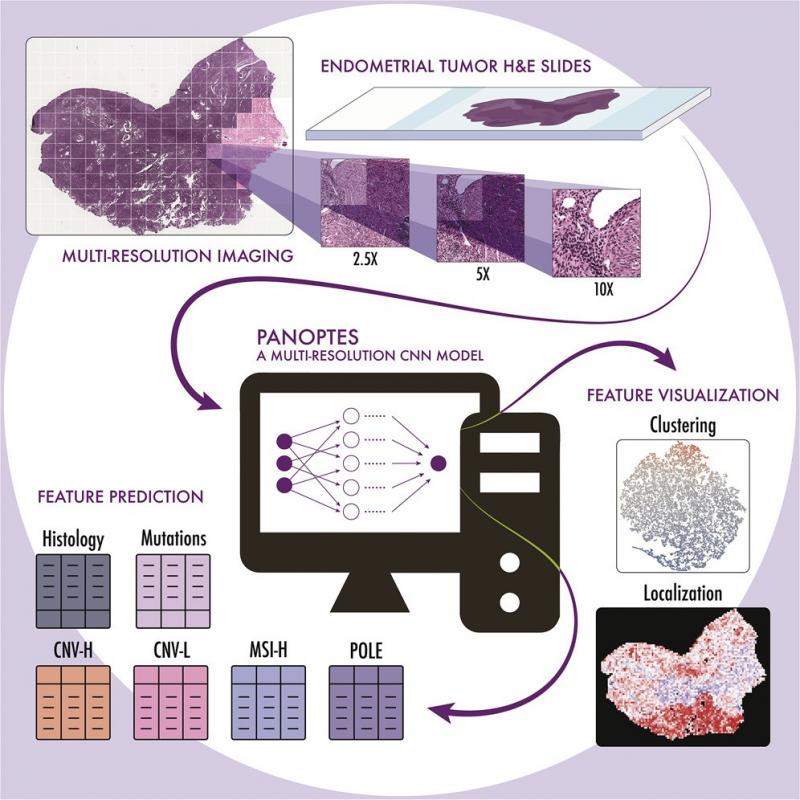News
NCI-funded Machine Learning Gives New Insight into Endometrial Cancer
Panoptes, a new machine learning model built on a deep convolutional neural network, is proving effective and efficient in reading histological slides from NCI genomic and proteomic data sets to predict four subtypes of endometrial cancer. Dr. David Fenyö and team from New York University’s Langone Health published their findings in a new article in Cell Reports Medicine.
Panoptes, named for a 100-eyed giant in Greek mythology, offers new insight into existing, archived histological slides stored in NCI’s Clinical Proteomic Tumor Analysis Consortium and The Cancer Genome Atlas data sets.
As noted by the investigators, “Panoptes predicted histological and molecular subtypes in endometrial cancer, as well as the mutation status of critical genes, with remarkable precision.”
This type of “computational pathology” offers a useful framework for supporting human pathologists, trimming the labor needed to interpret histological findings to under 4 minutes per slide and eliminating the time and cost of genetic sequencing.
The next steps, according to the researchers, will be to train the model on more diverse data sets to ensure it meets the rigors of real-world applications. They also plan to develop and test a user-friendly interface that will allow pathologists, and people without specialized computer training, to quickly and easily use the model in a clinical setting.
Concurrent projects also are underway to use a Panoptes-type model to gain insight into other cancer types, such as glioblastoma, melanoma, and lung.
Machine learning models such as Panoptes are a promising tool for precision medicine. Such models may someday allow clinicians to quickly and efficiently target medications to specific genetic mutations without the need for in-depth and costly genetic sequencing.

